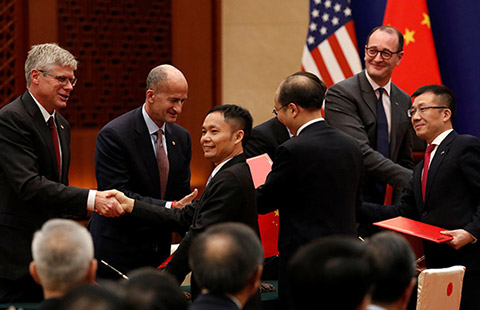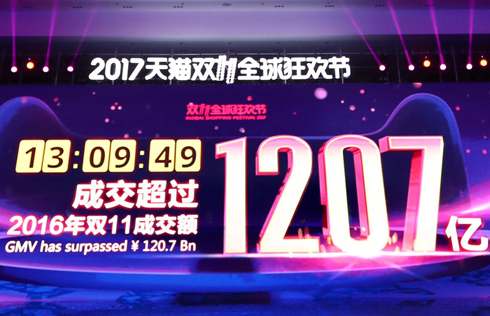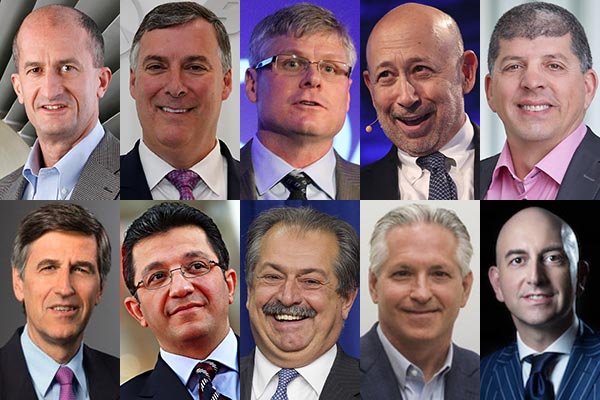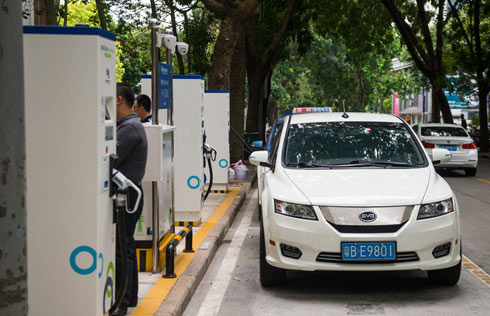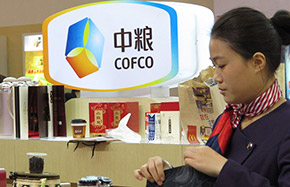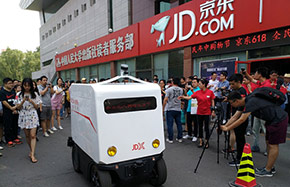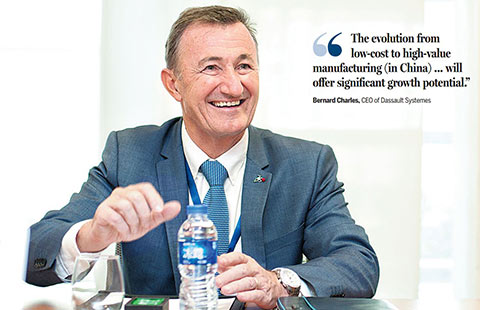China, Vietnam seek closer economic ties
BEIJING - The Hekou Port on the China-Vietnam border has been the scene of an almost ceaseless flow of goods crossing the border this year.
When a truck carrying 30 tons of coke pulled away from the checkpoint Tuesday, the port chalked up a record 5 million tons of cargo this year, over 60 percent more than the total for all of 2016. Trucks carrying minerals, timber, vegetables and fruit trundle across the border day and night.
Hekou is the busiest China-Vietnam land port. Port officials attribute the healthy throughput mainly to easier customs routines including paperless declarations and a new logistical system that coordinates road, rail and river transport.
But the growth in Hekou is only a small fraction of improved trade and economic cooperation. In the first three quarters, trade between the two countries was up more than 20.5 percent from last year. China's Ministry of Commerce expects the amount to reach $100 billion by the end of the year.
China has been Vietnam's largest trading partner for 13 years, and Vietnam is China's biggest partner in the ASEAN. Chinese President Xi Jinping will begin a state visit to Vietnam on Sunday after attending the 25th Asia-Pacific Economic Cooperation Economic Leaders' Meeting.
China and Vietnam need to deepen cooperation and foster new prospects in their interconnected interests, Xi said in an article published prior to the trip, noting the two countries need to work for substantive progress in cooperation in key areas, including infrastructure, trade, industrial capacity, cross-border economic cooperation zones and agriculture.
"As both countries have entered their own crucial development stages, leaders of the two sides will set a clear direction for practical cooperation in the future," said Hong Xiaoyong, China's ambassador to Vietnam.
With the progress of the Belt and Road, more opportunities will arise for businesses and investors and mutual benefit will be generated.
A Chinese trade delegation arrived in Vietnam earlier this week and dozens of Chinese companies signed agreements worth nearly $2 billion with Vietnamese peers, including purchases of Vietnamese aquatic products and fruit.
Chinese investment now amounts to $15 billion in Vietnam, with $1.28 billion made last year.
Construction is underway of a China-Vietnam economic and trade cooperation zone in Hai Phong, Vietnam's third largest city and the biggest port city in the north of the country.
Rather than simply transplanting outdated capacity, the $200 million industrial park will feature high-tech manufacturers from Shenzhen. "Three tech firms have agreed to move in and plan to start operations by the end of the year," said Zhang Xiaotao, an executive director of VCEP, an investor in the zone.
By the time the third stage is completed in 2022, the zone is expected to have received more than $1 billion of investment and created more than 30,000 jobs.
Infrastructure improvement is also on China-Vietnam cooperation agenda.
China and Vietnam have agreed to push for the completion of the Hanoi light rail (Cat Linh - Ha Dong) project and the design of a standard-gauge railway linking Hai Phong, Hanoi, and Lao Cai, part of a cross-border railway network that connects China with Vietnam's eastern coast.
China will help Vietnam secure Chinese preferential loans and borrow from the Asian Infrastructure Investment Bank to finance infrastructure and joint projects, according to a communique issued during Vietnamese President Tran Dai Quang's visit to China in May.




